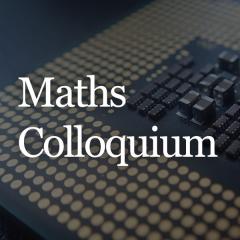Mathematics of Swimming: Why do the Limbs of Krill Move like a Wave?
Antarctic krill spend the majority of their life swimming across the ocean and use about 70% of their energy expenditure on swimming. These beautiful creatures, along with other long-tailed crustaceans (such as crayfish), swim with a remarkable stroke pattern known as the metachronal propulsion. Unlike rowing, in which the crew dip their oars into the water synchronously, the limbs in crustaceans move with a 20-25% phase difference, with the more posterior limb leading the cycle. This frequency-invariant coordinated motion resembles a traveling wave. Why and how do crustaceans do this? The "why" is a fluid mechanical question, whereas the "how" is a neurophysiological one, and both questions are mathematical ones!
About Maths Colloquium
The Mathematics Colloquium is directed at students and academics working in the fields of pure and applied mathematics, and statistics.
We aim to present expository lectures that appeal to our wide audience.
Information for speakers
Information for speakers
Maths colloquia are usually held on Mondays, from 2pm to 3pm, in various locations at St Lucia.
Presentations are 50 minutes, plus five minutes for questions and discussion.
Available facilities include:
- computer
- data projector
- chalkboard or whiteboard
To avoid technical difficulties on the day, please contact us in advance of your presentation to discuss your requirements.

